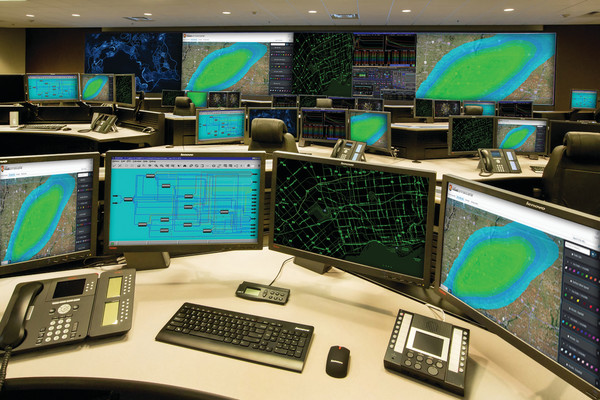The U.S. Environmental Protection Agency’s (EPA’s) plan to regulate carbon emissions is just the latest challenge facing the U.S. electric power system. Technological innovation is disrupting old ways of doing business and accelerating grid modernization. Earlier this year, AEE released Advanced Energy Technologies for Greenhouse Gas Reduction, a report detailing the use, application, and benefits of 40 specific advanced energy technologies and services. This post is one in a series drawn from the technology profiles within that report.

In recent years, many transmission networks have been upgraded with new sensors and automated control equipment, which allow for more efficient centralized control. Distribution networks, however, are further behind in deploying these systems, which could improve system operations. Distribution automation technology includes a combination of line sensors, new control equipment, and intelligent software that constantly optimizes distribution system operations for reliability and efficiency. Substation automation systems collect data about consumption and load and transmit the data to grid operators in real time. The data is used to improve operational efficiency and to help manage the grid during abnormal events, such as outages. Substation automation systems improve response time to problems from hours to minutes or even seconds.
Utilities are installing distribution automation equipment in order to meet rising requirements for reliability and resilience against extreme weather. Utilities in North America spent over $1.5 billion in distribution and substation automation in 2013, out of an $8 billion global market. Utilities use these automation technologies to reduce operation and maintenance costs, prevent outages, and have crews respond to outages more quickly and effectively. The granular data delivered by these systems on customer power usage also allows for better load forecasting and more efficient use of generation resources.
Distribution automation helps optimize voltage conservation and reactive power, integrate more distributed generation, and increase energy efficiency throughout the system without needing action on the part of customers, all of which helps to reduce emissions. Still, the primary benefit of distribution automation is a more flexible grid system that can anticipate and head off outages and other problems. A Department of Energy survey found that distribution automation resulted in better reliability for utilities. A grid that incorporates distribution automation is more efficient, flexible, and reliable, and it allows the distribution process to be managed by utilities more proactively.
